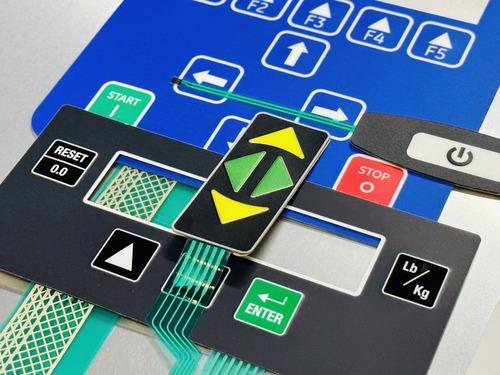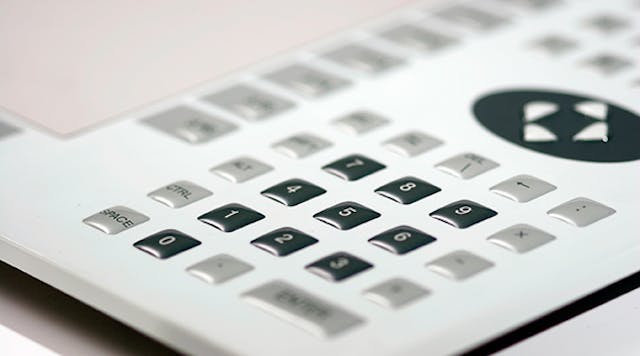Check Out the Variety of Industries Benefiting from Membrane Switches Innovation
Discover the Future of Control Interfaces: Why Membrane Switches Over Are Getting Popularity
As sectors progressively prioritize reliable and easy to use control user interfaces, membrane buttons are emerging as an engaging option that integrates capability with style flexibility. Their strength and small nature make them particularly matched for a range of applications, from health care to customer electronics. With the surge of smart modern technology and sustainability issues, the capacities and advancements surrounding membrane layer switches warrant more detailed examination. What certain advantages do they use that could redefine our interactions with innovation in the coming years?
Comprehending Membrane Layer Buttons
Membrane buttons are integral parts in modern-day digital tools, offering as interfaces between users and machines. These buttons are composed of several layers, usually including a graphic overlay, a spacer layer, and a circuit layer.

Durability is another crucial function, as membrane buttons can be created to resist ecological aspects such as moisture, dirt, and chemicals. This durability makes them perfect for applications in severe conditions. Overall, recognizing the structure and function of membrane layer switches is vital for valuing their role in the development of user interfaces in today's technology-driven globe.
Secret Advantages of Membrane Layer Switches
Using a range of advantages, membrane layer switches have ended up being a favored selection in different applications (Membrane Switches). Among the primary benefits is their compact layout, enabling makers to maximize space in gadgets without endangering functionality. Membrane layer switches are lightweight, which is particularly beneficial in portable digital tools

In addition, these buttons provide outstanding toughness. Constructed from flexible materials, they are resistant to dust, wetness, and a selection of environmental aspects, making them suitable for harsh conditions. This sturdiness often translates into a longer life expectancy contrasted to typical mechanical switches.
Furthermore, membrane switches over permit seamless combination of symbols and graphics, providing aesthetic versatility and improving individual experience. Personalization choices are substantial, allowing brands to create unique user interfaces that straighten with their item identity.
Another trick benefit is their simplicity of cleaning and maintenance. The level surface of membrane switches over protects against the buildup of dust and crud, making them excellent for sanitary environments. Membrane layer buttons are affordable, as they can be produced in high volumes at reduced expenses, making them easily accessible for a broad array of sectors. These aspects collectively add to their boosting popularity in modern control user interfaces.
Applications Across Industries

A myriad of industries are significantly adopting membrane layer switches as a result of their adaptability and functionality. These manage user interfaces are especially widespread in the automobile field, where they are utilized in control panels and infotainment systems, giving a sleek and straightforward interface. In the medical area, membrane layer changes promote the operation of diagnostic tools and patient tracking systems, making certain reliability and simplicity of usage in crucial circumstances.
In addition, the customer electronics market gain from membrane switches in devices such as Our site microwaves and push-button controls, permitting for streamlined style and boosted resilience. Membrane Switches. The aerospace industry additionally makes use of membrane switches in cockpit controls, where room constraints demand efficient and small layout solutions
Furthermore, the industrial market uses membrane layer switches in machinery control panels, providing durability versus rough settings and ensuring operational effectiveness. Retail atmospheres have welcomed membrane layer buttons in point-of-sale systems, boosting user interaction while preserving aesthetic the original source charm.
Layout Fads in Membrane Layer Buttons
Advancing alongside technical developments, design trends in membrane layer buttons are progressively focused on boosting customer experience and visual appeal. Modern membrane layer switches are being created for simpleness and instinctive usage, allowing customers to navigate interfaces easily. This change towards user-centric design emphasizes responsive responses, making certain that customers receive immediate verification of their actions.
In addition, adjustable graphics and colors are coming to be common functions in membrane button designs. This adaptability allows suppliers to produce personalized user interfaces that align with branding and details individual demands. The consolidation of backlighting is an additional famous trend, as it not only boosts exposure in low-light problems however additionally adds an aesthetically striking element to the general design.
Moreover, the trend in the direction of light-weight and thin products is gaining grip, allowing for sleeker styles that can seamlessly integrate right into various applications. This shift not just improves appearances however additionally contributes to the general capability and sturdiness of the buttons. Lastly, green materials are progressively being made use of, reflecting a wider activity towards sustainability in product style. These design patterns jointly underscore the growing value of combining type and feature in the growth of membrane switches, ultimately enhancing the customer experience.
Future Overview for Control Interfaces
The future of control interfaces is poised for significant transformation as arising modern technologies remain to improve individual interactions across numerous tools. The assimilation of sophisticated materials, such as flexible electronics and conductive inks, will certainly improve the adaptability and performance of membrane switches, making them significantly versatile to a variety of applications. Additionally, the surge of the Web of Things (IoT) will certainly drive need for even more intuitive, straightforward user interfaces that can perfectly integrate with clever gadgets.
As expert system and equipment knowing evolve, regulate interfaces will likely incorporate even more customized functions, enabling individuals to interact with tools in ways that are customized to their preferences and behaviors (Membrane Switches). This change towards user-centric style look at more info will certainly position membrane layer switches as a vital player on the market, specifically in industries like medical care, automobile, and customer electronic devices
In addition, the push for sustainability will motivate suppliers to explore environment-friendly products and production methods, making sure that the future of control user interfaces straightens with environmental considerations. In general, as innovation proceeds to advance, membrane switches will end up being progressively advanced, leading the way for innovative control solutions that improve individual experience and functional performance throughout varied sectors.
Verdict
In conclusion, the raising fostering of membrane switches highlights their value in the advancement of control interfaces. As user-friendly user interfaces end up being vital in the context of IoT and AI developments, membrane layer switches are positioned to play a critical function.
As industries significantly prioritize efficient and straightforward control user interfaces, membrane buttons are emerging as a compelling remedy that integrates capability with style flexibility.Longevity is one more key function, as membrane buttons can be designed to stand up to environmental variables such as wetness, dirt, and chemicals.Developing along with technological innovations, style fads in membrane buttons are progressively concentrated on enhancing customer experience and aesthetic appeal. Modern membrane layer switches are being made for simplicity and user-friendly usage, enabling customers to browse user interfaces easily. These layout patterns jointly highlight the expanding importance of integrating kind and function in the advancement of membrane layer switches, eventually enhancing the user experience.